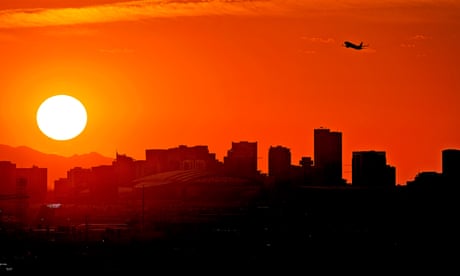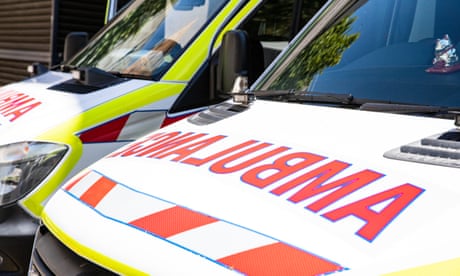Extract from The Guardian

As Australia stares down a predicted very hot summer, dehydration presents a serious – but preventable – health risk for many of us.
Sat 9 Dec 2023 01.00 AEDT
Last modified on Sat 9 Dec 2023 07.50 AEDTEventually I could go no further. It was an unseasonably warm day. I was sweating moderately but not excessively. I became slightly light-headed, and a kind of apathy and despair settled on me, almost like I had lost the will to live. In my tendency for melodrama, I sobbed “just leave me here” to my alarmed husband.
Somehow, we made it to the next camp, where a couple of electrolyte tablets (of which more in a moment) dissolved in water, a meal and a lie down did the trick: by the next day I was as good as new.
But I was left mildly shocked at how little it had taken to drain me of energy or purpose. I thought of colonial explorers like Ludwig Leichhardt, who is believed to have died of thirst on his third, ill-equipped expedition in 1848, from Brisbane to Perth. Presumably such a death would involve slipping into unconsciousness. Maybe not the worst way to go, but I had learned my lesson. What had happened to me was a simple case of dehydration.
The adult human body contains around 60% water. All our cells, including our brain cells, require water to carry out their essential functions. Dehydration impairs that process. A 2018 meta-analysis found that dehydration corresponding to as little as 2% of normal body mass is associated with impairment to attention, executive function and motor coordination.
Dehydration is mysterious because thirst, the obvious barometer of when you may need more fluids, is not always a reliable or accurate indication of how hydrated you are. It tends to kick in when we are already between 1 and 2% dehydrated. (It’s not a design flaw, it’s evolution: otherwise humans would spend their entire time looking for something to drink.)
To compound the problem, water intake is not always the answer: depending on how far gone you are, you may need to replace the salts and minerals known as electrolytes – sodium, calcium, potassium – that you have sweated out. An easy test is to check the colour of your urine: if it is a pale straw colour, you are drinking enough, if it is dark, you aren’t.
Most of us will become aware of dehydration through thirst and excessive sweating, and perhaps a mild sense of dizziness. In more severe cases, failing to drink enough water can cause cramping and lead to increased likelihood of kidney stones.
In 2003 a heatwave in France caused the deaths of 15,000. Most of these deaths were among older people, according to Human Rights Watch. For elderly people, dehydration is more acute and has more complex side-effects including, confusion, compromised spatial awareness, blurred vision, and impaired motor skills. It can cause falls and lead to organ damage.
As my GP explained before I embarked on a longer, more arduous walk in the Flinders Ranges, dehydration can be the result of a diminished thirst signal (which weakens with age, along with a reduction in taste bud sensitivity and saliva production), or a side-effect of other medications (especially laxatives and oral treatments for type 2 diabetes) or simply due to a lower level of fluid in the body as people get older. Infants are another vulnerable group.
What about the rest of us?
Many sporting codes have developed protocols about when it is too hot to compete safely. The Australian Open is played at what is often the hottest time of the year; its extreme heat policy allows for 10-minute breaks and can recommend that matches be halted in exceptional temperatures.
But if there are guidelines for athletes, what about the rest of us? Given that dehydration is entirely preventable, and therefore relatively easy to fix, do we need a public awareness campaign to remind us every summer to watch our fluid intake?
The answer, according to Prof Ollie Jay, is an emphatic yes. Jay occupies a unique position as the only professor of heat health in Australia, at the Heat and Health Research Incubator at the University of Sydney’s Charles Perkins Centre. His multidisciplinary team is studying aspects of heat on pregnancy and maternity as well as urban shading initiatives and has collaborated with NSW Health on a recent update of its online Beat the Heat public health campaign.
He explains that dehydration may be caused by more than one factor and that thirst is not a reliable measure of need. “How much you should drink to prevent it depends on things like your weight, age, general health, level of activity, and variables such as wind, shade and humidity. It’s not as easy as saying men need to drink 10 cups of water and women need to drink eight,” he says, quoting a common formula that he believes is too general to be helpful.
“As a general guide, you can assume that on a hot day, depending on what you are doing, you are sweating half a litre an hour and should be drinking 250ml of water every hour.
“Another really good tip is don’t just put it in you, but put it on you. Spraying the body or immersion extracts heat from the body efficiently.” And that does not mean an ice bath, he says. “The temperature really doesn’t matter.”
Patrons at Womadelaide, held in March when the temperatures can soar, are regularly misted with water during the event. At a recent march through Sydney, on an unusually hot spring day, marshals along the route sprayed faces.
As with many other aspects of our health, there is wearable tech in the works from Jay’s team, to be launched later this month. The Heat Watch has been co-designed in consultation with more than 50 focus groups including representatives of elderly people, culturally diverse communities and infants. It will monitor body temperature and suggest cooling strategies – including turning off electric fans if the temperature reaches more than 40C, when they can make things feel worse. This is because on humid days, sweat evaporates off the skin more slowly than normal and fans can make the body gain heat rather than lose it.
‘Another really cool place’
More and more places are grappling with severe heat as a serious threat. In 2022 the City of Melbourne appointed not one, but two chief heat officers. In partnership with the Adrienne Arsht-Rockefeller Foundation Resilience Center, these newly created roles tie in with the city’s climate and sustainability initiatives to help residents adapt to rising temperatures.
Heat officer Krista Milne says that during the heatwave in Melbourne in 2014, there were 167 excess deaths and more than 600 hospitalisations due to dehydration and heatstroke. (Dehydration and heatstroke can occur in similar hot conditions, but are not the same medical events. While dehydration relates very specifically to the lack of water in the body, heatstroke is when the body ceases to be able to regulate its own temperature and can result in death or permanent damage without proper treatment.)
“Since then the City of Melbourne has embarked on strategies to create cool and shaded travel routes and gathering places, as well as installing more drinking fountains and water play areas in children’s playgrounds,” she says – though there have been no new water features for adults to cool off in integrated into new public spaces. Maps of cool routes are available on the city’s website.
Her advice on a day of extreme heat is to cool off in a public space such as an air-conditioned library (Melbourne ones will have cold water to dispense and will extend their hours during prolonged heatwaves). “Another really cool place is a cinema,” she says.
With the hot weather already causing strain across Australia, Jay says awareness about the many actions people can take to protect themselves is important. “We tend to take a simplistic approach, but there is no silver bullet when it comes to heat health.”


No comments:
Post a Comment